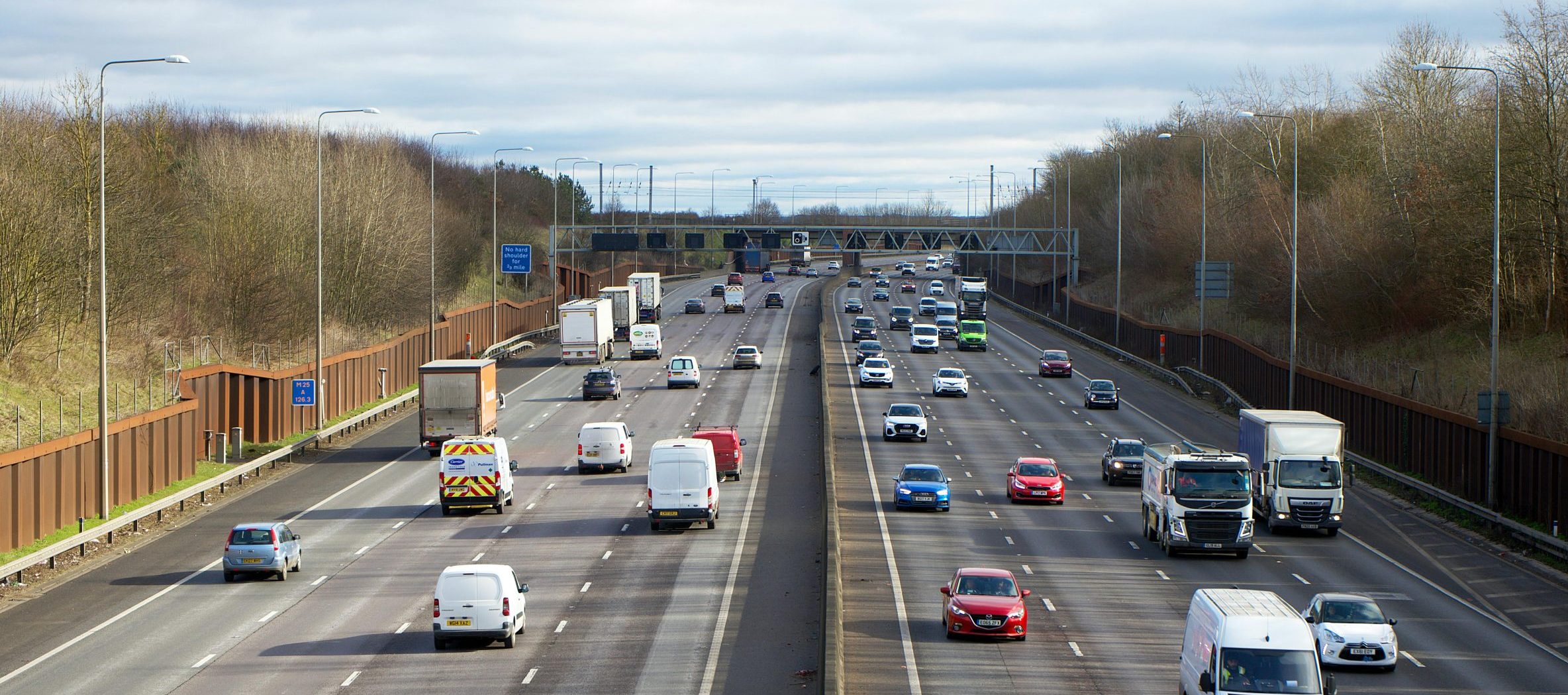A summary of shared EV charge points for heavy vehicles (eHGVs) in the UK

Country-wide, bus and coach operators with existing electric charging depots are beginning to open their doors to commercial vehicle partners, whilst localised projects are developing public charge points for eHGVs.
Here’s our summary of where you can find them, where to watch, and which projects are leading the trend.
Note: this information has been compiled to help the industry know more about existing, planned, and potential sites and is based on publicly available information. Readers should conduct their own due diligence into sites, as some are speculative observations.
Why is shared charging infrastructure needed in the UK?
Shared charging infrastructure can help to expand the options for commercial fleet owners to transition to electric. Such collaboration will be crucial to catalyse the decarbonisation of longer routes, whilst infrastructure lags behind interest in vehicles.
Plans are being developed by a variety of pilot projects to install public charge points for commercial fleets across the country. We’ve listed these below and will endeavour to update this article as more locations are publicly announced.
In addition, opening private depots to commercial fleets is an emerging trend, for bus operators especially whose fleets are typically on duty during the day, thus making their electric charge points available.
With our experience in electrifying bus depots across the UK and globally, we’ve come across several examples, which you can explore below.
Where are the shared charge points for electric HGVs in the UK?
Scotland
Bus operator Stagecoach is trialling a charging hub at its Aberdeen depot; if successful, the hub will extend to another depot in Aberdeen and one in Perth, totalling 54 charge points. Stagecoach is also part of the ScotZEB consortium (see below).
Another bus operator, First Bus have made agreements with third parties with vans for charging using their rapid EV chargers at sites in First Bus depots in Glasgow (Caledonia depot), and Aberdeen. They have a variety of locations listed on their charging partnerships website page, which says most can accommodate HGVs.
The coach operator Ember has opened its Dundee and Aberdeen sites for HGV charging, with some details available on their website.
The North
Reportedly the first HGV charging station to open in the UK, the evpointuk charge point at Rivington Services – the southbound motorway service area (MSA) on the M61 between Preston and Manchester – is open for business.
In Selby, North Yorkshire, is a Voltloader site which the company intends to open for public charging in the second half of 2025.
In Warrington and Sheffield, Aegis Energy is set to build a charging hub for HGVs, capable of powering over 40 trucks. The hubs are two of 30 that the company are planning to open by the end of 2030. Construction of one of the 30 sites will begin this year, due to open in 2026 (though which site, has not yet been published).
The Midlands
At the Able Humber Port at Immingham on the Humber, North Lincolnshire, construction has begun on a public charging hub with four chargers, powering eight bays for eHGVs. Milence is the company building it, and has a live map of its sites, showing which are operational.
At Markham Moor truckstop in Nottinghamshire, just north of Tuxford where the A1 meets the A57, Shell have instated an electric truck charging station with two connectors designed for HGVs.
First Bus’ depot in Leicester is up and running with third parties such as Welch’s already making use of the charging facilities. Like its depots in Scotland, the bus operator is helping other fleets decarbonise in Leicester by opening to commercial partners, and intends to do so at its other sites across the country.
Birmingham is home to the Tyseley Energy Park, and the pilot project eFreight, which will create 32 publicly accessible charging hubs specially for the freight and logistics sector. The locations have not yet been disclosed, apart from one in Birmingham, at the time of writing.
The Electric Freightway is another government-funded pilot programme, with the brief to develop an electric charging network for HGVs. It is doing this across the country in collaboration with a variety of hauliers and organisations. The project will install high power charging stations on motorways, at truck stops, and at some private sites at hauliers’ depots.
One such location in the network will be a public charge point, and the MSA brand Moto is involved with the programme. Their site at Tamworth in Staffordshire has received planning permission, the first in the network to do so.
In Peterborough, Voltloader has three chargers, two Ultra Rapid and one Rapid. The company expect to be opening further locations in Corby and Selby to third parties in the second half of 2025, with more in the pipeline.
Just like the two locations in the North, there are sites in Immingham in Lincolnshire, and Corby and Towcester in Northamptonshire where Aegis Energy plans to build a charging hub for 40 HGVs. The sites are planned for opening by the end of the decade.
Welch’s Transport in Duxford, Cambridgeshire has one charger available for third parties to power up. Their own live Google map is a helpful resource to bookmark.
In Bedfordshire, the Checkley Wood EV Charging Station from AW Group on the A5 near Leighton Buzzard has 18 charge points to service the needs of electric HGVs.
The South
Gridserve is a company with country-wide electric charging ‘service stations’. Their Electric Forecourt in Braintree, Essex, can accommodate large commercial vehicles. And in Banbury, Oxfordshire the Instavolt charging station has good access for HGVs though not principally for this kind of vehicle, so is an option for eHGV owners.
A site in Aylesford, Kent, was announced in late 2024 by Milence. It will initially open with four bays for electric HGVs, able to charge in 1.5 hours. The company aims to install 1,700 chargers in this location and the second phase hopes to include faster megawatt chargers, reducing the charge time to 45 minutes.
Locations for electric HGV charge points have been announced in Suffolk and Oxfordshire via the PAUA Pins project. PAUA, a technology brand, is leading a project to demonstrate shared depots, together with Suffolk County Council and Oxfordshire County Council. The locations are not yet known, at the time of writing.
Further First Bus locations that could be available are in the south of the country. Moto’s MSA site at Exeter has also made progress towards becoming an eHGV charging location, with a compact substation having been installed as part of the Electric Freightway project.
What are the other locations to watch, that could have shared charge points?
Projects are being announced all the time, at varying stages of progress. Here’s what we know so far.
A consortium of bus and coach operators in Scotland have joined the ScotZEB electric bus project, led by Zenobē, and will electrify their depots. The project is in early stages, with positive signs about members making their charging facilities available to third parties where possible.
ScotZEB is an initiative from the Scottish government to catalyse the transition to zero emission vehicles, making the most of private finance and public subsidy in an innovative programme. Find out more here.
Also north of the border, a map of the most likely locations for charge points in Scotland has been developed by Transport Scotland and Heriot Watt University. While it’s still at concept stage, it offers insight for operators that work in Scotland to understand more about how and where to charge their EVs.
Nissan’s Sunderland site is the confirmed location for a shared charging hub for three Electric Freightway members. It’s not clear whether this could be opened up to more third parties in future, but is one to watch.
The Electric Freightway will install high power eHGV charge points at 10 commercial sites, part of its country-wide network. The consortium has announced that some of these will be at private depots.
Where the private depots are to be located is hard to say, as Electric Freightway have not disclosed this information (yet). The project has hauliers among its members, that are proactively pursuing zero emissions vehicles. Their locations, from Bedfordshire, Buckinghamshire, Cheshire, Leicestershire, to London might be opened for use by third parties.
One of the most intriguing locations is at United Utilities’ wastewater site in Greater Manchester. Energy is produced at the site through the processing of sludge, and the electricity generated will power an EV charger, that is due to be installed at Davyhulme Sewage Works.
Moto, the motorway services brand is involved in Electric Freightway and has locations across the country. Charge points could be installed at their locations, as part of the commitment of the project to electrify 15 MSA sites around the country.
And there are other motorway service companies whose UK-wide networks are good candidates for eHGV charging, given their strategic locations; these include Roadchef, which has announced intentions to pilot charge points for HGVs, and add 100 extra parking bays.
And last, but not least: to help us understand the overall picture of charging needs across the country, consultancy Element Energy have published a report with data on locations. This goes into detail about estimates for depot chargers, public en–route chargers, and public overnight chargers.
In conclusion: working together will get the job done
The logistics and commercial fleet industry knows well that charging infrastructure is one of the biggest challenges to a zero-emissions vehicle future. One of the key themes at the Motor Transport Freight Decarbonisation Summit in 2024 was ‘collaboration’. As we have observed at Zenobē, it’s through cooperation and sharing the same innovation goals, that electrifying large fleets – and removing harmful tailpipe emissions – can be done.
Are you ready to start your electric journey?
This isn’t the future, it’s happening now. Our team of engineers and finance experts are here to help you on your journey. Fill out the form, and we’ll be in touch.
